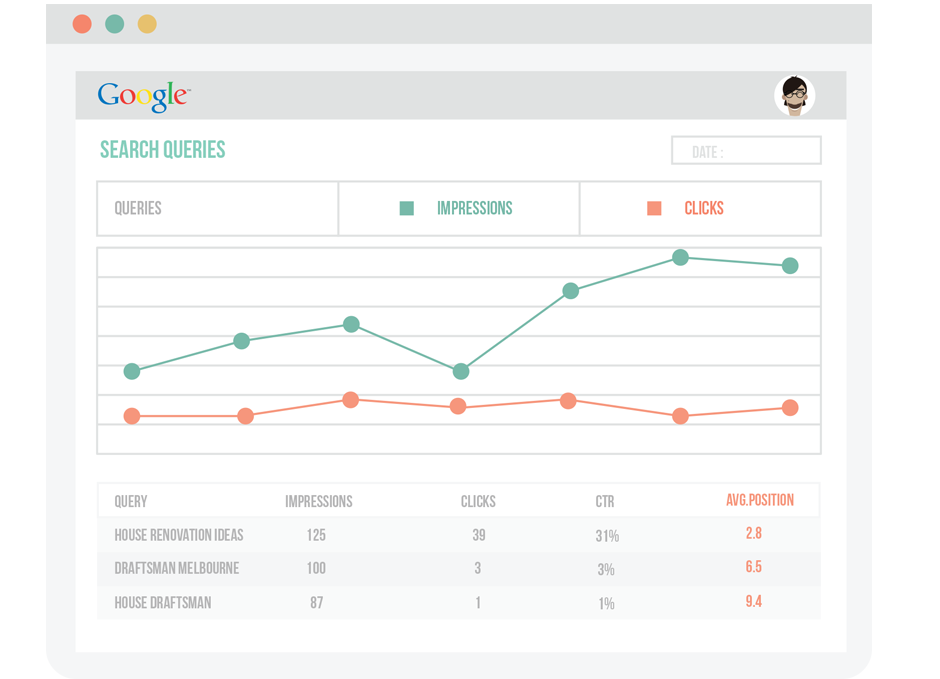Launching Your Website
Launching Your Website
Obsessive, compulsive Steve
Last time Steve had a website built for him, the developer launched the site on the web but that was about it. His site was never really found by Google and he had no idea how many visitors it actually attracted.
Crossing the ‘t’s’ and dotting the ‘i’s’ is one of Steve’s favourite pastimes (part of his obsessive nature!). Once the website goes live, there are some key steps that, if not done, will severely limit your ability to get visibility and also track and refine your online efforts. This chapter covers off the important stuff that your development team should do to give your site the best possible chance.
Onsite check
Here is a list of technical components that need action. Each website will vary in terms of features and functionality:
- Scan the source code of the website to ensure there are no instances of the development URL.
- Check for any broken links in your site website using this tool https://www.brokenlinkcheck.com/.
- Install Better WP Security plugin (or similar) and configure.
- Remove the default WordPress theme assuming your new site is using a different theme (TwentyFourteen).
- Check SEO (YOAST) plugin is activated (or a similar search engine optimisation plugin).
- Ensure all your title tags and meta descriptions are populated and unique for every page.
- Ensure robots.txt is configured and is not blocking your website (visit https://www.loveatfirstsite.net/robots.txt for an example).
- Check to ensure search engines are not being discouraged in the WordPress ‘reading’ settings.
- Ensure the Google Analytics tracking code is installed and successfully receiving data.
- Setup goal tracking via Google Analytics.
- Setup monthly reporting via Google Analytics to send you a report of website statistics.
- Ensure your site has been verified via Google Webmaster Tools and submit an XML sitemap.
- Link Google Analytics and Google Webmaster tools.
- Change the WordPress general settings to your email address.
- Check that there is a custom favicon.ico setup (small icon which appears in the browser tab and address bar).
- Ensure all your enquiry forms are working and submissions are arriving in your inbox.
- Ensure a CAPTCHA code is setup on your forms to stop any automated spam.
- Remove any page/posts that are in the trash tab.
- Check all blog posts are attributed to the correct author.
- Check to ensure your site loads in under three seconds using this tool – https://tools.pingdom.com/.
- Take an offsite backup of your website and store locally on your computer or external hard drive.
- Ensure there are regular weekly/monthly backups being taken and sent to an offsite site such as Amazon S3 or Dropbox.
- Ensure the ‘admin’ username for the WordPress login has been removed OR changed (important for WordPress security).
- Test both the ‘www’ and ‘non-www’ versions of your domain name to ensure these are working correctly.
- Website has been tested on a mobile device.
- Cross browser and platform (PC and Mac) testing has been completed.
- If there is online ordering on your site, do a test order.

Download the love – Download the above checklist online here: https://www.loveatfirstsite.net/download
Website load time

I feel the need, the need for speed
Google is obsessed with speed. Every time you search for something they actually give you the measurement on how quickly the search was performed. It is no wonder that the speed of your site is an important measurement in how your website gets ranked. Google knows a faster website results in a happier customer and therefore reward sites that are quick loading.
If your site loads quicker, this means more page views, which in turn should filter through to more sales and enquiries. If your site is slow, users will get frustrated and leave.
The primary way you can decrease your website’s load time is the hosting provider you partner with (see Chapter 2). Other ways to decrease load time are: using a caching plugin (a way of reducing the load on your server), making sure the image file sizes are small, and using a content delivery network (a way of sending the files which make up your website via the closest and most efficient possible route).

Oi, take note! – Use this tool to check the load time of your website: https://tools.pingdom.com/
An ideal load time would be around three seconds or less. The end goal is to get the information as fast as possible to the visitor. This will have an impact on the user experience and how Google views your website.
A good digital agency will take care of this for you but here are some good resources for more information:
- WPSmush it plugin (a plugin for reducing image size when uploaded to WordPress)
Webmaster tools

Webmaster tools is a free interface provided by Google to help site owners understand how Google views your website. It is a great way of understanding if there are any potential problems with your website, giving you feedback and suggestions. It also reports on how your site ranks for different keywords within Google search results.
Additionally Google provide a dashboard which communicates issues such as hacking or malware detected, updates to WordPress required or problems accessing your site.
The following important steps should be completed when setting up Google Webmaster tools:
- Verify ownership of your site – Your site needs to be verified with Google via uploading a HTML file or script on your website to prove that you actually own the site.
- Upload an XML sitemap – This is like a ‘roadmap’ to all the pages which exist within your site. The WordPress SEO plugin will generate this automatically.
- Link it to Google Analytics for more detailed data sharing.
After launching your new website, visit Google Webmaster tools over the following week to ensure that it is not reporting any errors. This interface will also report back on any missing or duplicate title tags and meta descriptions allowing you to further refine your onsite SEO.
Google Analytics

Google Analytics is a free tool provided by, you guessed it, Google. It provides valuable feedback on how your visitors find and use your website. It integrates other Google tools such as AdWords and Webmaster tools. Regardless of who built your website, it is essential you have this feature installed with ready access to the data.
Google tracks usage through your website by a small snippet of code installed on your site. This code then tracks the important information such as:
AUDIENCE – How visitors found your site and what they actually did once they got there. You can also learn about your visitors in detail, such as their geographical location, age, gender, engagement, what device they accessed your website on and how they flow through your website.
ACQUISITION – Where your website traffic came from, such as Google (SEO), paid search, referring sites such as external links or accessing your site direct. You will see and understand what people are physically typing into Google to find your website or social engagement and will be able to analyse any paid campaigns.
BEHAVIOUR – How many pages these people visited and what they viewed. How they flowed through the website and engaged with your content. You’ll access other important metrics such as site speed and even see in page analytics clicks overlaid over your site in real time.
CONVERSIONS – Measuring goals which are defined within the site such as an enquiry through a contact form, a sale through a shop or an email sign up.
There is so much information in Google Analytics that it is tempting to spend hours and hours buried in statistics. The key metrics that are vitally important are:
- understanding where your visitor has come from
- how they found you
- what they looked at
- measuring the success of the flow through the site.
The day after launching your new website and installing the tracking code, ensure you log in to Google Analytics and check that data is being received. Another great feature is that regular customised reporting can be delivered direct to your inbox.
Keep an eye on website traffic after the launch (assuming you have Google Analytics set up). A big drop in traffic will alert you to the fact that there is something technically wrong. You may experience a small drop in visits, but if done well, your new website will get traction and you should see a spike in traffic.
Use this data to make small continuous changes to ensure your website keeps getting better by understanding where the blockages are in the website.
Testing your website
A thorough test of your website is crucial to ensure everything works correctly.
User testing
Ideally your business’s team members have already seen the site while it was in development and provided feedback. Before you launch and activate the website, send it to your clients and suppliers and ask for input. Here are some of the key items to ask for feedback on:
- Readability of the website
- The ability to navigate easily and find important information
- Spelling, grammar and punctuation
- General user experience
- Testing of forms or other technical components
Once the site is live online, share via a dedicated email marketing campaign or social media and see how the marketplace receives it. Users are generally very forthcoming with this type of information and it can be a vehicle for website improvements. Ensure people can interact with your site and find what they need quickly.
Cross browser testing

The way you view your website on your computer may be slightly different to another user using a different browser and mobile device.
The most widely used browsers are:
- Mozilla Firefox
- Google Chrome
- Internet Explorer
- Apple’s Safari
Variations on these exist on the hundreds of different mobile devices in the marketplace. Especially with mobile devices, it is important to test on as many different shapes and sizes so that you feel confident of a great user experience.
By referring back to your Google Analytics data it will actually reveal which browser and device your visitors mainly use. It is also worth testing older versions of the browsers to ensure your website ‘depreciates’ gracefully.
https://www.browserstack.com/ provides an excellent live browser testing tool.
Backups

Only the paranoid survive. And in today’s digital world, it can be far too easy to become complacent. Take for example the Melbourne based hosting company who, in 2011, had their servers hacked. Their entire server was erased, including all backups, snapshots and other information that would have allowed them to restore. With no offsite backups, this left thousands of Australian businesses stranded until they were able to re-install or re-construct their websites.
The lesson here is always have an offsite backup. What is the definition of an offsite backup? It is a backup of the site that exists externally to the environment where your website resides.
A good hosting provider such as wpengine.com takes daily snapshots of your website. In addition to this, use a plugin called Backup Buddy (https://ithemes.com/purchase/backupbuddy/) to push a regular offsite backup to a cloud hosting service such as AmazonS3 or Dropbox. It is also advisable to download this file regularly to your local office or computer for complete peace of mind.
This will help you sleep easier at night, knowing that you can always restore a backup of your website if need be.
Summary
- Before launching your new website, make sure your agency has done the items in the checklist.
- Use the suggested tools to speed up the load time of your website.
- Ensure Google Analytics and Webmaster tools are integrated as they will help you thoroughly understand the strengths and weaknesses of your website.
- Do a cross browser and mobile device test prior to launch.
- Use staff and clients and suppliers as a test ground for your website and act on the feedback.
- Use offsite backup systems to prevent a disaster.
- Keep refining and improving.
- Web Design Gold Coast
- Web Design Brisbane
- Web Design Melbourne
- Web Design Sydney
- Web Design Bundaberg
- Web Design Cairns
- Web Design Hervey Bay
- Web Design Mackay
- Web Design Rockhampton
- Web Design Toowoomba
- Web Design Townsville
- Web Design Sunshine Coast
- Shopify Gold Coast
- Facebook Ads Agency Gold Coast
- SEO Packages Brisbane
- SEO Packages Sydney
- SEO Packages Perth
- SEO Packages Melbourne
Five by Five acknowledges the Traditional Custodians of this land. We pay respect to their Elders past, present and emerging for their wisdom, teaching and cultural knowledge and extend that respect to other Aboriginal and Torres Strait Islander peoples.
Five by Five are based on the Gold Coast and provide great looking high performing websites for businesses Australia wide including Brisbane, Sydney, Melbourne, Adelaide, Canberra, Perth – all regions and cities of Australia.





